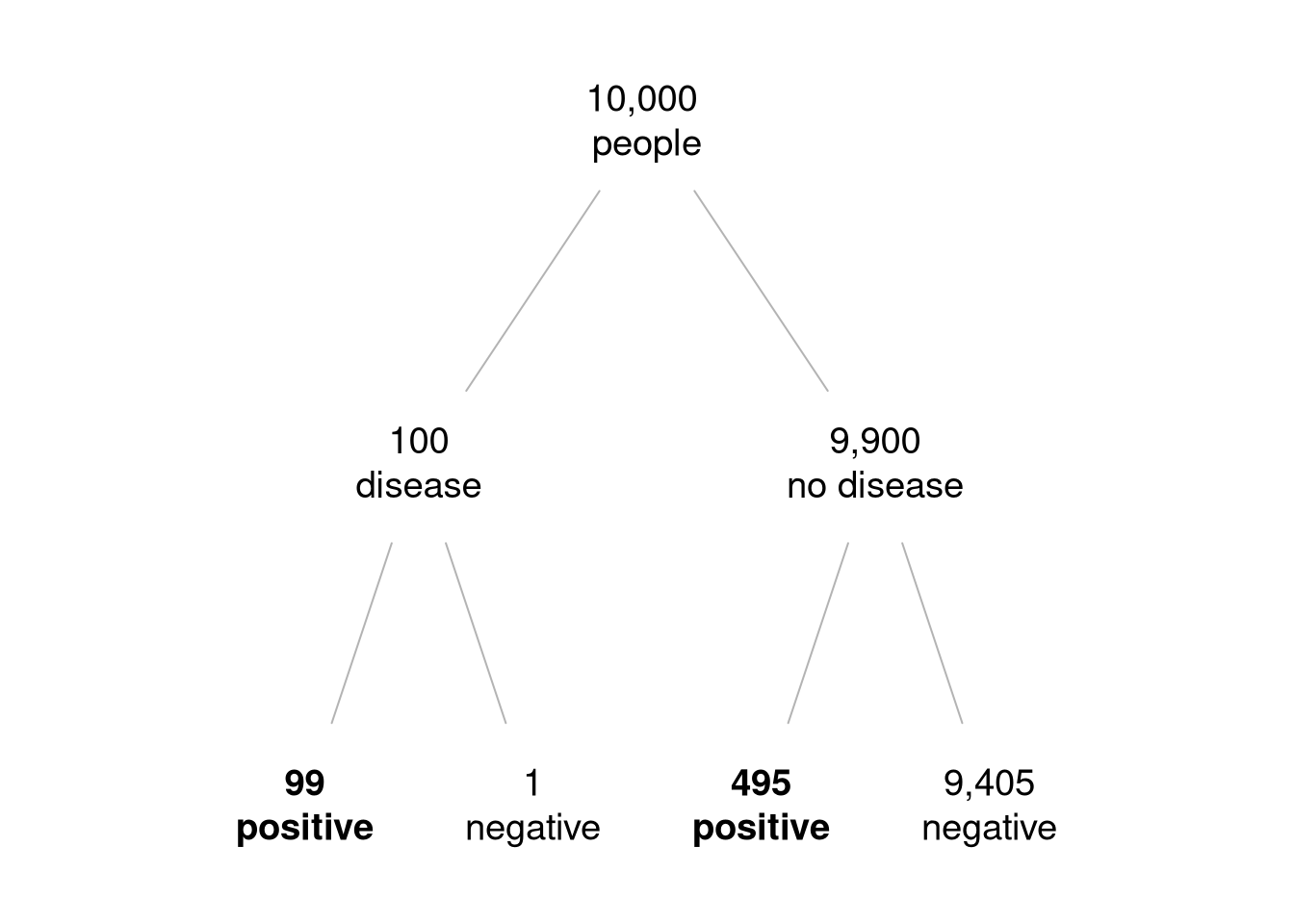3.17 Example: diagnostic tests
The following example is adapted from Aitken, Roberts, and Jackson (2010). There is a disease in a population of 10,000 people and there is a test to diagnose the disease. The base rate and error rates have the following properties:
- disease base rate: 0.1
- meaning: the disease affects 100 people out of the total 10,000, and it does not affect the other 9,900.
- test sensitivity: 0.99
- meaning: out of the 100 people who have the disease, 99 of them have a positive test result. The final 1 person tests negative despite having the disease. This person receives a false negative result.
- test specificity: 0.95
- meaning: out of the 9,900 people who do not have the disease, 9,405 have a negative test. The other 495 people test positive despite not having the disease. These people receive false positive results.
This information is visualised in the tree diagram in Figure 3.5.

Figure 3.5: An expected frequency tree diagram of the disease testing example. Out of the 594 people who test positive (shown in bold font), 99 (~17%) have the disease.
Out of the total 594 people who test positive, only 99 (~17%) are true positives. This means that if a randomly selected individual from this population tests positive, then it is highly likely that they do not have the disease. This phenomenon is caused by the very low base rate (prior probability/odds) of the disease. A randomly selected individual has a very low probability of having the disease prior to being tested and so even a test with low false positive rate will still lead to many false positives overall. This demonstrates why the base rate is an important factor to consider as well as error rates.